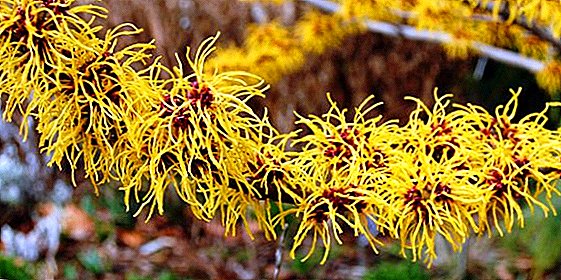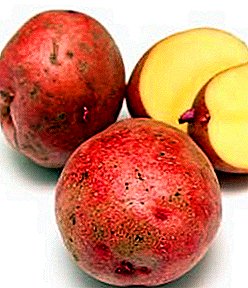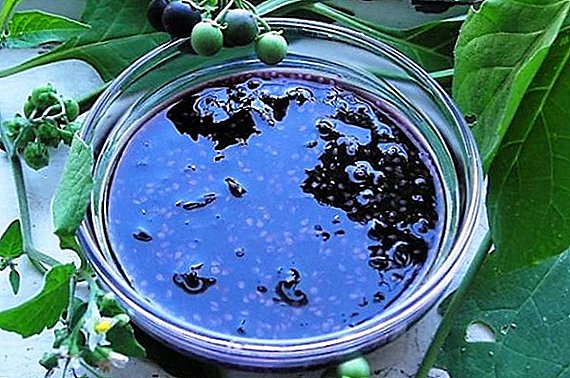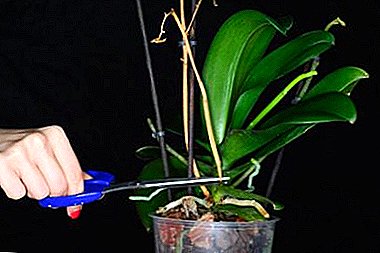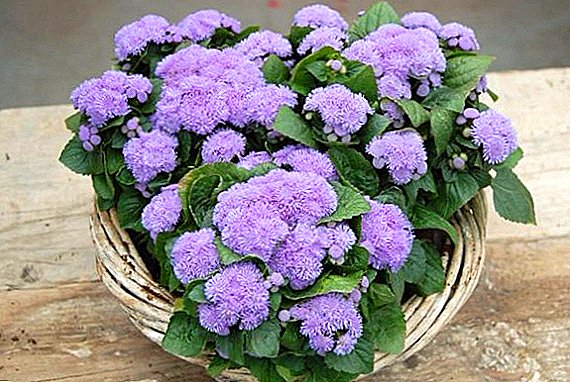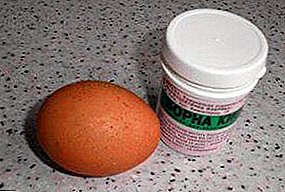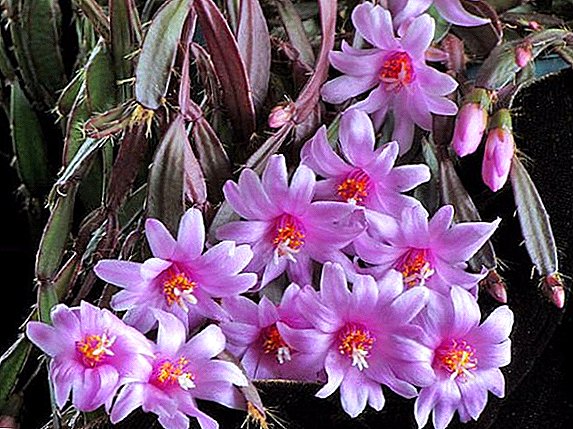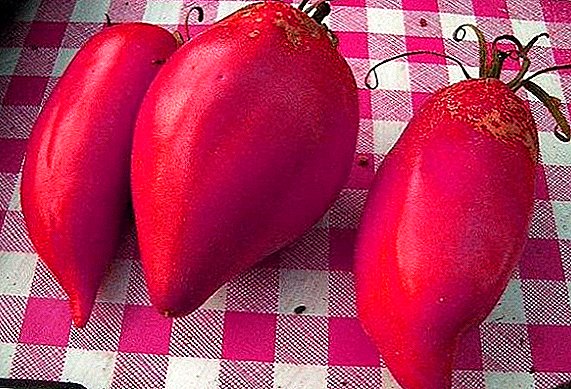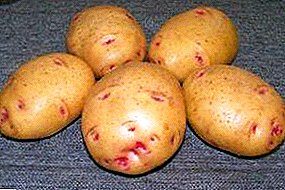
On the shelves of shops you can find many types of potatoes, which differ in their taste, and features of care.
Variety "Picasso" belongs to the group that shows excellent yields and has many other advantages. In return, she needs only a little of your time and care.
In this article we will tell in detail about this wonderful variety, its characteristics, peculiarities of agrotechnics, and propensity to diseases.
Picasso's Potatoes: variety description
| Grade name | Picasso |
| general characteristics | Dutch mid-season table potatoes tolerate drought and high temperatures |
| Gestation period | 110-130 days |
| Starch content | 10-12% |
| Mass of commercial tubers | 80-140 gr |
| The number of tubers in the bush | up to 20 |
| Yield | 200-500 c / ha |
| Consumer quality | normal taste, suitable for salads and frying |
| Recumbency | 90% |
| Skin color | yellow with pink splashes |
| Pulp color | cream |
| Preferred growing regions | Central, Central Black Earth |
| Disease resistance | susceptible to NTN-virus, moderately resistant to late blight over the leaves and leaf curl virus, resistant to all other potato diseases |
| Features of growing | pre-germination recommended, requires increased fertilizer rates |
| Originator | AGRICO U.A. (Holland) |
Potatoes "Picasso" is a bright representative of late ripening varieties of potatoes, the plant is completely ripens in 110 - 130 days after germination. It was bred in the Netherlands, and entered into the State Register of Varieties of the Russian Federation in 1995 (for Central and Central Black Earth regions). Its name was due to the unusual pink and yellow color of tubers.
Picasso boasts an impressive yield, with an average of 20 tons of potatoes per hectare of crops. A maximum yield can reach 50 tons at the end of the growing season. The situation as a whole is also positively influenced by the fact that the level of commodity tubers is kept at around 93 - 95%.
In the table below you can get acquainted with such indicators as the quality and yield of potatoes of different varieties:
| Grade name | Yield | Recumbency |
| Picasso | 200-500 c / ha | 90% |
| Bullfinch | 180-270 c / ha | 95% |
| Rosara | 350-400 c / ha | 97% |
| Molly | 390-450 c / ha | 82% |
| Luck | 420-430 c / ha | 88-97% |
| Latona | up to 460 c / ha | 90% (subject to the absence of condensate in the storage) |
| Kamensky | 500-550 | 97% (previously germination at storage temperatures above + 3 ° C) |
| Impala | 180-360 | 95% |
| Timo | up to 380 kg / ha | 96%, but the tubers germinate early |
Potatoes in this variety are round-oval, large and heavy. The mass of one commercial tuber varies from 80 to 140 g. The rind has a light yellow color with characteristic pink eyes and the same spots around them. The flesh is a pleasant cream color with a small, as for the late variety, starch content - 10 - 12%. One bush can have up to 20 such tubers.
You can compare this figure with the same for other varieties using the table below:
| Grade name | The number of tubers in the bush |
| Picasso | up to 20 |
| Jelly | up to 15 |
| Typhoon | 6-10 pieces |
| Lilea | 8-15 pieces |
| Tiras | 9-12 pieces |
| Elizabeth | to 10 |
| Vega | 8-10 pieces |
| Romano | 8-9 pieces |
| Gypsy | 6-14 pieces |
| Gingerbread Man | 15-18 pieces |
| knapweed | up to 15 |
The taste qualities of the variety are excellent (5 on a five-point scale) and, moreover, the variety has a long storage period.
 Read more about the storage of potatoes: timing, temperature, places, possible problems.
Read more about the storage of potatoes: timing, temperature, places, possible problems.And also, how to store roots in winter, in the conditions of vegetable storehouses, cellars, in the apartment and on the balcony, in boxes, in the refrigerator and peeled.
The bushes at Picasso are tall, upright and have a foliage tops. During the flowering period are covered with flowers with white corollas. The leaves on the bushes are large, dark green. They are also characterized by the fact that possess quite good resistance to twisting.
A photo
Here you can see photos of Picasso varieties of potatoes:


Features
A great feature of this variety is that it has impressive keeping quality. It is this variety that is best purchased for the winter because of the almost zero probability of germination. The potato itself is suitable for cooking any food, does not turn yellow when it is cut, and has no tendency to boil over. Moreover, the harvest tolerates transportation, and therefore suitable for trade.
 We offer you interesting materials about a variety of properties of potatoes, including medicinal.
We offer you interesting materials about a variety of properties of potatoes, including medicinal.Read all about the benefits and harms of raw potatoes, the danger of solanine, why eat sprouts and drink juice.
REFERENCE! Picasso has become very popular also due to the fact that he endures almost any vagaries of the weather. Accordingly, it can be grown not only in the regions prescribed in the Register, but also in many others.
When planting plants, if you want to speed up the harvest, it is better to germinate tubers. To do this, place them in a well-lit place with a temperature not higher than 15 ° C. Another useful solution will be stimulation of tubers with the help of useful solutions, for example "Zircon" or "Appin". Planting your seed in the beds is in the spring, when the main frosts have passed, but all the moisture has not evaporated from the soil.
IMPORTANT! Picasso's plant grows very strongly, therefore between tubers it is necessary to leave intervals of 50 cm.
In the future, the plant will need a few sessions of feeding, with them the harvest will be the richest and tastiest. Read more about how to feed potatoes, when and how to apply fertilizer, how to do it when planting. And also what are the best feeding and what is the use of mineral.
Weeding and the first earthing up should be carried out when the seedlings reach 6–7 cm in height. The second hilling will need to be held before flowering, when the first flower buds appear. Read about whether hilling is necessary for plants, how to do it, how to do it correctly manually and with the help of a walk-behind tractor, whether you can get a good crop without weeding and hilling.
If your site has not been raining for a long time, then the plants should be watered independently. Once every 10 days will be quite enough. Mulching will help in weed control.
Diseases and pests
The undoubted advantage of this potato variety is its immune system. Picasso has a strong resistance to many viruses and diseases: viruses X and Yn, scab, cancer, nematode, Fusarium, Alternaria, verticillus. However, his immune system has one weakness - late blight.
Late blight is a real scourge of all potato crops, because it is the most common disease and has dire consequences. Sick this sore harvest can be reduced by as much as 70%. The main external sign of the disease is white fungal plaque on the back of the leaves.
You can see more detailed information about late blight and the fight against this disease in this video:
Over time, the tubers are also affected, and dark brown spots begin to appear on them, which subsequently extend to all neighboring bushes. At the last stage of the disease, the plant literally dies off - the leaves turn black, dry out and fall off, the same thing happens with other organs of the potato.

Late blight
And a few words about pests. Most of all, the troubles are brought to gardeners by Colorado beetles and their larvae, wireworms, bears, potato moth, butterfly scoop, aphid, spider mite, cicadas. On our site you will find a lot of useful information about effective methods of dealing with them.
Picasso's potato variety is suitable primarily for those owners who appreciate the taste of their potatoes, need the possibility of long-term storage or transportation of the crop. Therefore, this variety can be an excellent choice for both sale and storage in cellars to the joy of your family.
And in the conclusion of the article let me offer you a whole series of interesting materials about how to grow potatoes. Read all about modern Dutch technology and the cultivation of early varieties, about which varieties are most popular in Russia and grown in other countries of the world. And also what are the alternative methods of harvesting - under straw, in bags, in barrels, in boxes, from seeds. And how to make a good business plan for growing potatoes.
Below in the table you will find links to materials about potatoes with different ripening terms:
| Mid-season | Medium early | Middle late |
| Santana | Tiras | Melody |
| Desiree | Elizabeth | Lorch |
| Openwork | Vega | Margarita |
| Purple Haze | Romano | Son |
| Yanka | Lugovskoy | Lasock |
| Tuscany | Tuleyevsky | Aurora |
| Giant | Manifesto | Zhuravinka |


